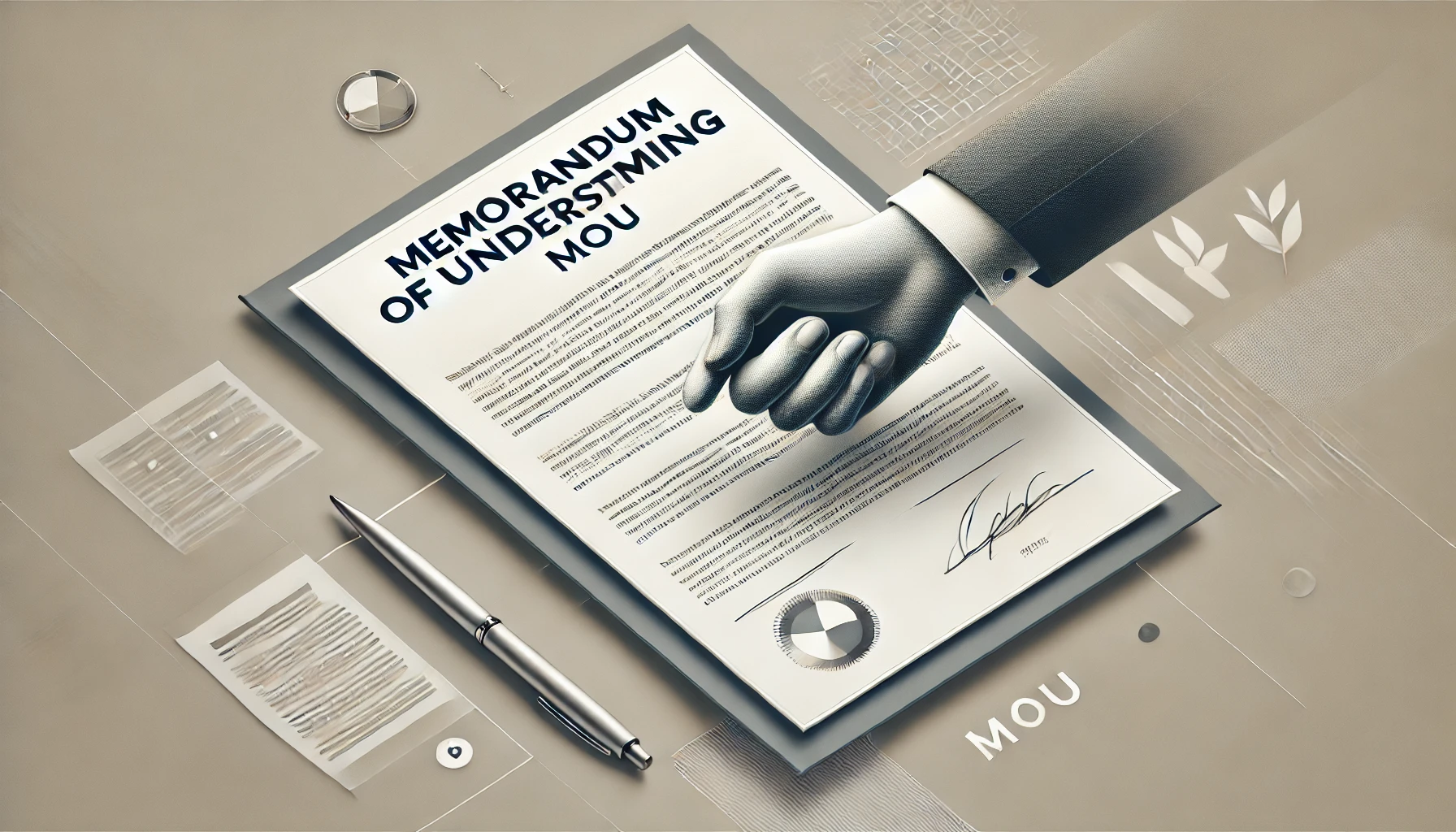
How to Start Memorandum of Understanding
Memorandum of Understanding
Need Help with Memorandum of Understanding?
Fill Up the below Mentioned Form
A Memorandum of Understanding (MoU) is a written agreement that works like a contract between parties. It is important because it clearly defines things like the final price, delivery details, terms and conditions, and the specific products or services involved.
Package Inclusion : -
- Discussion about your business
- Agreement drafting
- 2 Round alterations
Memorandum of Understanding- Overview
A Memorandum of Understanding (MoU) is a written agreement between two or more parties that outlines their intentions and responsibilities for working together. It serves as a formal document that explains the terms, conditions, and key details of the partnership or arrangement, such as goals, timelines, and expectations. While an MoU is often not legally binding, it shows the commitment of the parties involved to follow the agreed terms.
Advantages of a Memorandum of Understanding (MoU):
Clarity of Terms: An MoU clearly outlines the roles, responsibilities, and expectations of all parties, reducing confusion.
Facilitates Negotiation: It acts as a foundation for discussions and helps resolve differences before finalizing a formal agreement.
Cost-Effective: MoUs are simpler and cheaper to draft compared to legally binding contracts.
Flexibility: Since MoUs are often not legally binding, they allow for easy adjustments if circumstances change.
Encourages Collaboration: Signing an MoU reflects mutual trust and intent to cooperate.
Prevents Disputes: Documenting terms minimizes misunderstandings and disputes in the future.
Serves as a Roadmap: It provides a detailed plan for the partnership or project, ensuring all parties stay aligned.
Legal Evidence: While not always enforceable, an MoU can serve as evidence of intent in legal matters if needed.
In conclusion, an MoU is generally not legally binding at first glance, but it depends on the intentions of the parties and their negotiations. It can be partly binding and partly non-binding. Whether an MoU is legally enforceable or not can be decided by a court after reviewing its content.
Frequently Asked Questions
An MoU is a written agreement between parties that outlines their mutual understanding and expectations for a project or partnership.
Usually, an MoU is not legally binding. However, it can be binding if the language and intent clearly show the parties wanted it to be enforceable.
An MoU provides clarity, helps avoid misunderstandings, and lays the groundwork for future agreements. It shows the commitment of all parties involved.
- Purpose and goals of the agreement
- Roles and responsibilities of each party
- Timeline and deliverables
- Terms and conditions
- Signatures of all parties
An MoU is generally not legally enforceable and serves as a framework for cooperation, while a contract is legally binding and enforceable in court.
Yes, an MoU can be modified if all parties agree to the changes and document them.
An MoU is useful when parties want to formalize their intentions without entering into a binding contract, such as during initial stages of negotiation or collaboration.
All parties involved in the understanding must sign the MoU to show their consent and commitment.
Since most MoUs are not legally binding, non-compliance may not have legal consequences unless specific binding terms are included. However, it may damage trust and the working relationship.
An MoU can be used in court as evidence of the parties’ intentions, but its enforceability depends on its wording and whether it includes legally binding terms.
